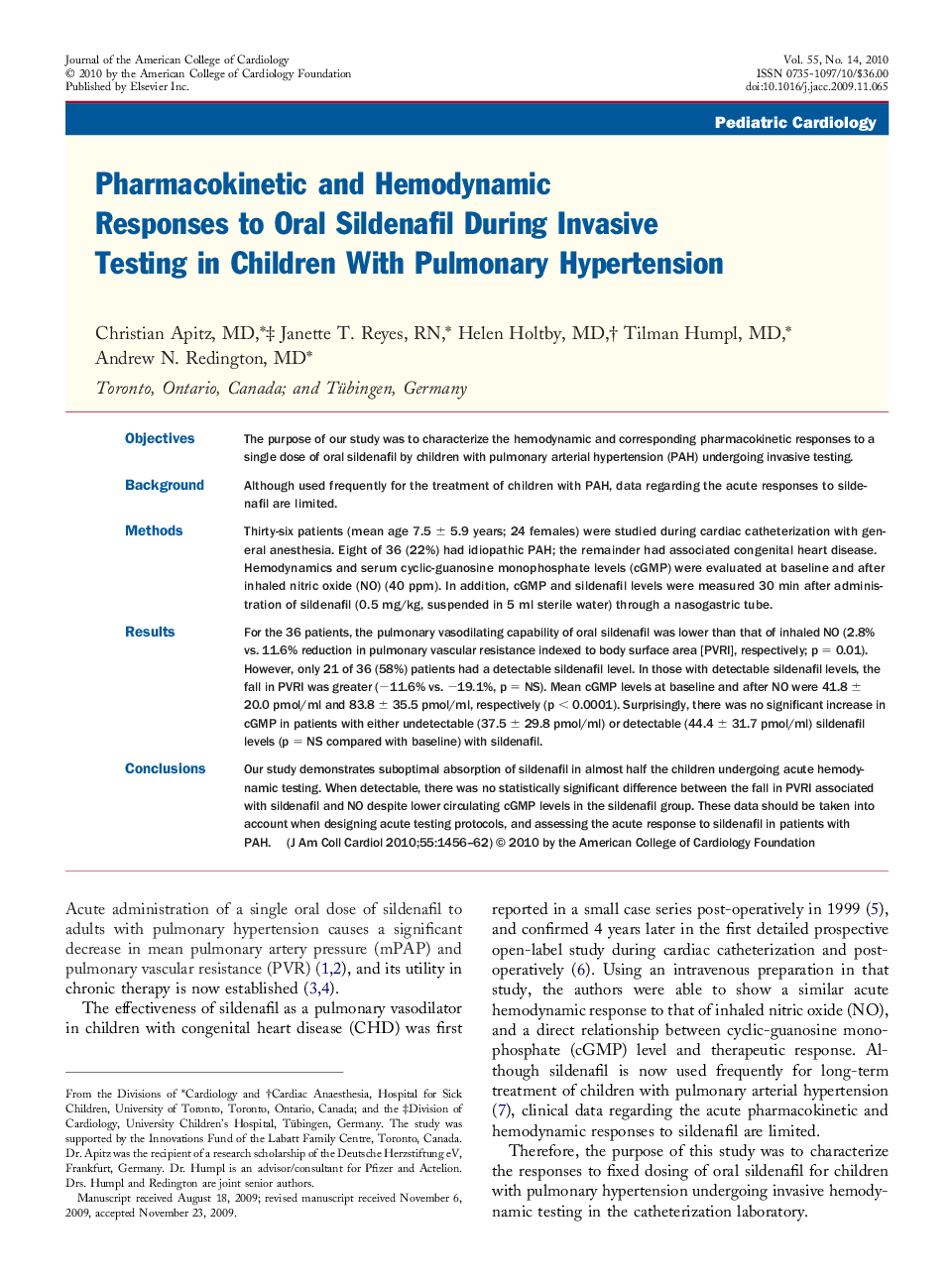| Article ID | Journal | Published Year | Pages | File Type |
|---|---|---|---|---|
| 2950035 | Journal of the American College of Cardiology | 2010 | 7 Pages |
ObjectivesThe purpose of our study was to characterize the hemodynamic and corresponding pharmacokinetic responses to a single dose of oral sildenafil by children with pulmonary arterial hypertension (PAH) undergoing invasive testing.BackgroundAlthough used frequently for the treatment of children with PAH, data regarding the acute responses to sildenafil are limited.MethodsThirty-six patients (mean age 7.5 ± 5.9 years; 24 females) were studied during cardiac catheterization with general anesthesia. Eight of 36 (22%) had idiopathic PAH; the remainder had associated congenital heart disease. Hemodynamics and serum cyclic-guanosine monophosphate levels (cGMP) were evaluated at baseline and after inhaled nitric oxide (NO) (40 ppm). In addition, cGMP and sildenafil levels were measured 30 min after administration of sildenafil (0.5 mg/kg, suspended in 5 ml sterile water) through a nasogastric tube.ResultsFor the 36 patients, the pulmonary vasodilating capability of oral sildenafil was lower than that of inhaled NO (2.8% vs. 11.6% reduction in pulmonary vascular resistance indexed to body surface area [PVRI], respectively; p = 0.01). However, only 21 of 36 (58%) patients had a detectable sildenafil level. In those with detectable sildenafil levels, the fall in PVRI was greater (−11.6% vs. −19.1%, p = NS). Mean cGMP levels at baseline and after NO were 41.8 ± 20.0 pmol/ml and 83.8 ± 35.5 pmol/ml, respectively (p < 0.0001). Surprisingly, there was no significant increase in cGMP in patients with either undetectable (37.5 ± 29.8 pmol/ml) or detectable (44.4 ± 31.7 pmol/ml) sildenafil levels (p = NS compared with baseline) with sildenafil.ConclusionsOur study demonstrates suboptimal absorption of sildenafil in almost half the children undergoing acute hemodynamic testing. When detectable, there was no statistically significant difference between the fall in PVRI associated with sildenafil and NO despite lower circulating cGMP levels in the sildenafil group. These data should be taken into account when designing acute testing protocols, and assessing the acute response to sildenafil in patients with PAH.
